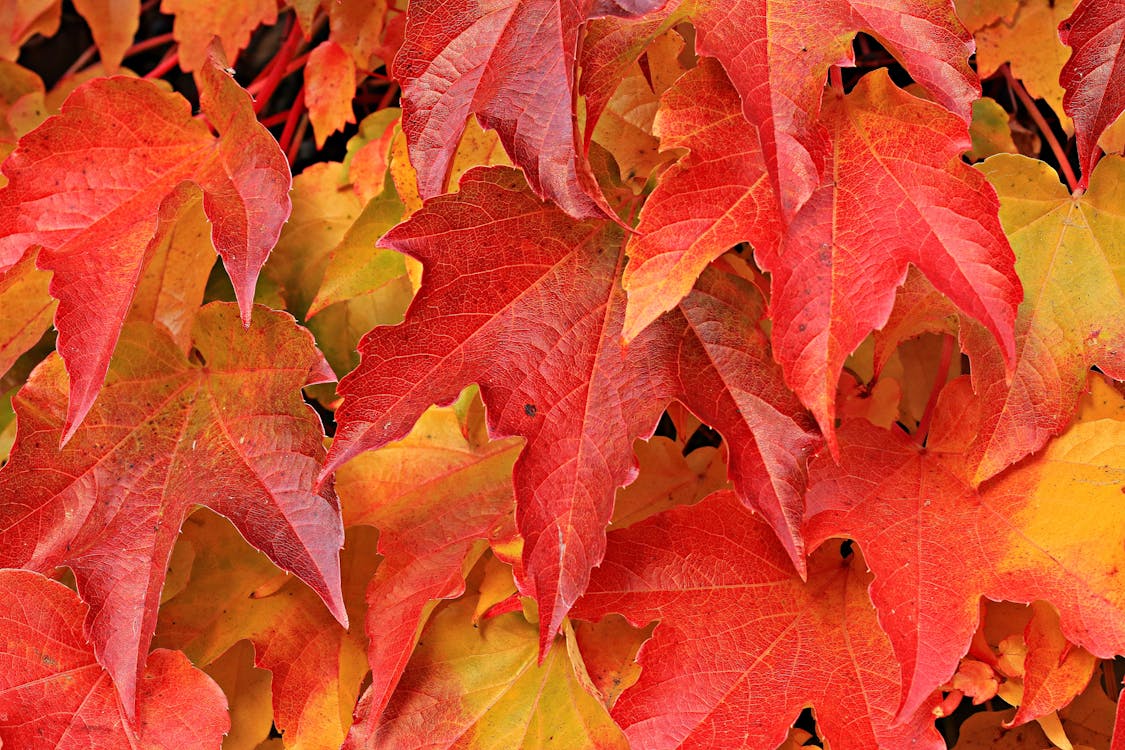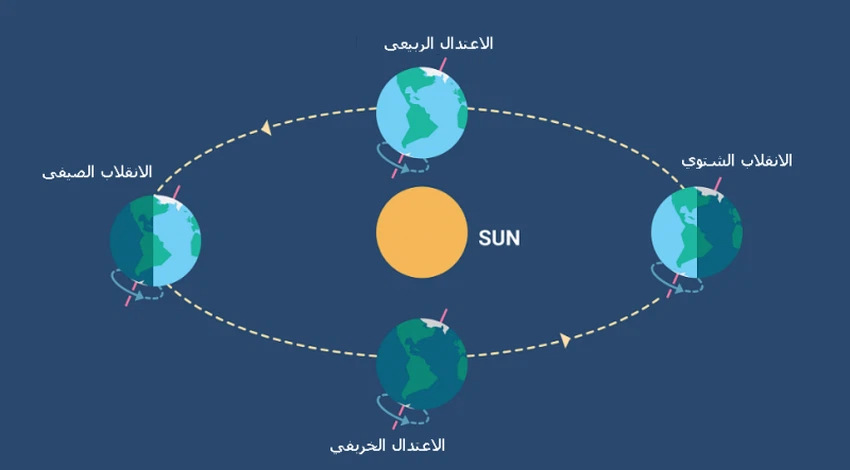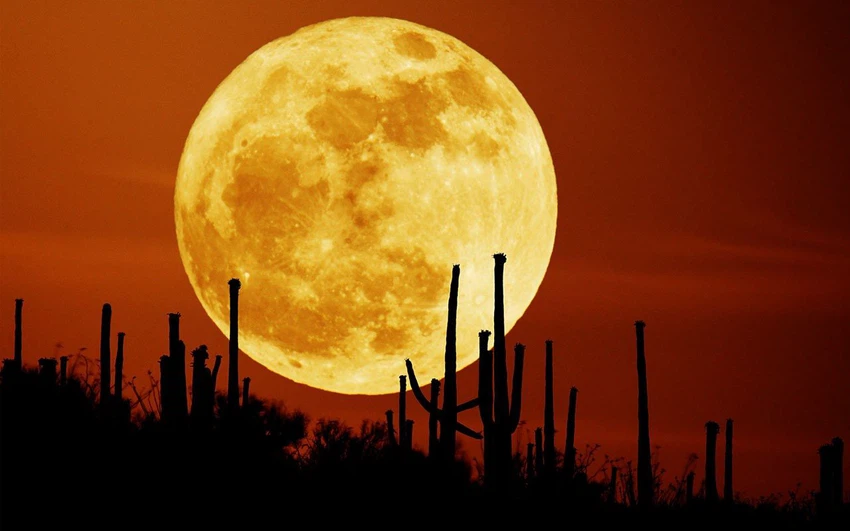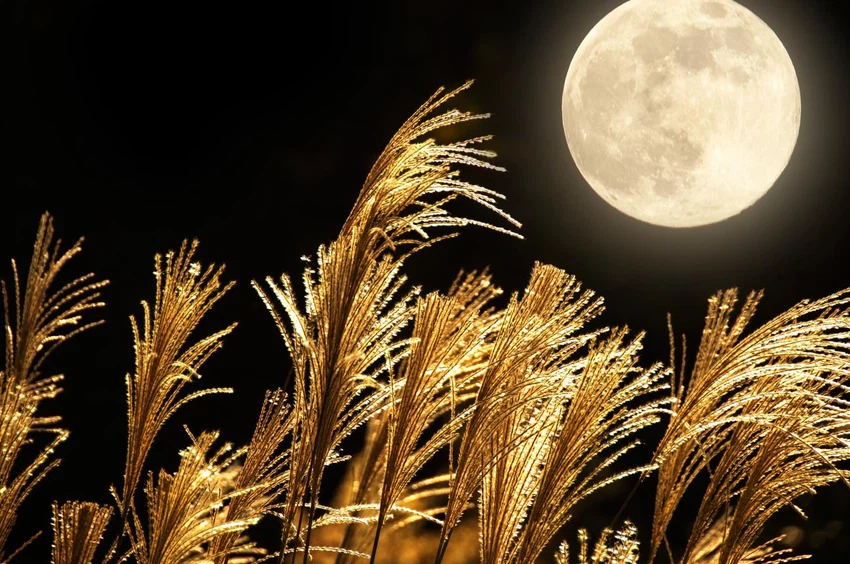When does the fall semester 2023 start? What is the autumnal equinox and what is its relationship to the harvest moon?
Weather of Arabia - While some enjoy the warm sun and pleasant summer weather, others eagerly await the arrival of the fall season, after many heat waves affected various parts of the earth, many records were broken, and fires swept some countries.
Don't worry, summer won't last long, it must end and fall will replace it, so cold weather, dark mornings, and a cup of hot chocolate will return. Get ready, as the golden autumn season is almost here

Date the first day in the fall semester
In the past, people did not have modern clocks, but they used to measure the hours of the night and day using geometry. People have discovered that the sun rises and sets in a slightly different place each day of the year. And when the sun reached the northernmost point, it recorded the longest day of the year in the northern hemisphere and called it the summer solstice, while the southernmost point of the sun represented the winter solstice, which is the shortest day of the year in the northern hemisphere when the North Pole is tilted at maximum away from the sun. The equinox occurs twice a year, and both times the sun drinks directly from the east and sets directly from the west.
Ancient peoples used many primitive sites to track the position of the sun and predict the equinoxes and solstices such as Stonehenge and Newgrange in the United Kingdom and the Medicine Wheel in Majorville, Alberta, Canada. For centuries, people have celebrated the autumnal equinox in the northern hemisphere, which coincides with the harvest season, so many traditional harvest celebrations occur on or around the autumnal equinox.

When does the fall semester 2023 start astronomically?
Usually, when we talk about the first day in the fall season, we are referring to the beginning of the astronomical fall season, which is determined by the Earth's axis and its orbit around the sun.
Answer : The fall semester of 2023 begins on September 23, 2023, and ends on December 22, 2023.
The ephemeris determines the seasons because the Earth's axis is tilted 23.5 degrees relative to its orbit around the Sun. Both the equinoxes and the solstices are related to the Earth's orbit around the sun.

Does the fall semester start on the same day every year?
Answer: Autumn does not start on the astronomical same day each year but the window of possible dates is very small, in most years fall can be expected to start on September 22 or 23. And every now and then it could happen on September 21 or 24. But the last time we saw an autumnal equinox on September 21 was over a thousand years ago, we don't expect it to be on September 24 until 2303.
For the coming years, the astronomical start date for the fall semester will be as follows:
- 2024 : The fall semester begins on September 22, 2024, and ends on December 22, 2024.
- 2025 : The fall semester begins on September 22, 2025, and ends on December 21, 2025.
- 2026 : The fall semester begins on September 23, 2026, and ends on December 21, 2026.
- 2027 : The fall semester begins on September 23, 2027, and ends on December 22, 2027.
Why does the autumnal equinox date change from year to year?

When does the fall semester 2023 start in meteorology ?
With regard to meteorology, the year is divided into 4 periods, consisting of three months each. These chapters are divided to coincide with the Gregorian calendar, which facilitates monitoring, weather forecasts, and comparison of monthly and seasonal statistics.
Answer: According to meteorology, the fall semester 2023 begins on September 1 and ends on November 30.
Arranging the four seasons according to meteorology
- Spring semester (March, April, May) - (March, April, May)
- Summer (June, July, August) - (July, June, August)
- Fall semester (September, October, November) - (September, October, November)
- Winter (December, January, February) - (December, January, February)

The solstices and equinoxes
The equinoxes and solstices are astronomical transition points between the seasons, and represent major phases in the Earth's astronomical cycle. In a year there are two equinoxes (autumn equinox and vernal equinox) and two types of solstice (winter solstice and summer solstice). No fixed dates have been determined for these events due to the elliptical orbit of the Earth around the sun. The earth's orbit around the sun means that the sun is at the closest point, and at the beginning of July the sun is at the farthest point
What is the difference between equinox and solstice?
What is the autumnal equinox day?
Answer : The autumnal equinox day is the day on which the autumn season begins astronomically, and night and day are equal on the day of the autumnal equinox, and the nights become gradually longer from this day until reaching the day of the spring equinox
On the day of the autumnal equinox, the northern hemisphere begins to tilt away from the sun, which leads to less sunlight, and thus temperatures cool significantly.

Where did the term Equinox, which means moderation, come from?
Answer : The term itself is derived from two Latin words, “ equus ” which means equal, and “ nox ” which means night. And this name was invented because of the equal length of day and night on the day of the autumnal equinox. Although it's not exactly equal, it's close enough and varies by many minutes, depending on where you are in the world.

What is the relationship of the harvest moon to the autumnal equinox?
One of the favorite traditions related to the Fall Equinox relates to this day's relationship to the full moon. The full moon closest to the Fall Equinox is called the Harvest Moon. Why is it called that?
Answer : It relates to farming around the autumnal equinox, when the moon rises at sunset for several nights in a row, and this provides farmers with enough extra light to finish their harvest before the deadly autumn frosts begin.
The moon usually rises after about an hour each night, but around the time of the autumnal equinox the angle of the moon's orbit and the tilt of the earth coincide in the right way causing the moon to rise only about 20 to 30 minutes later for several nights in a row.

The name of the harvest moon
The harvest moon is one of two moon names that are astronomical terms not linked to a specific month, because it is always called the full moon closest to the autumnal equinox, and is therefore called the harvest moon. It could be the full moon of September or October.
Another astronomical name is the Hunter's Moon , which is the full moon immediately following the Harvesters' Moon and can occur in October or November.
When will the harvest moon 2023 appear?
Answer : The 2023 Harvesters Moon will appear on September 29
Questions and answers about the fall season and the autumnal equinox
The first question: Are day and night actually equal on the days of the equinox?
Answer: Day and night are not literally equal on the days of the autumnal equinox or the spring equinox, it depends on where you live.
On the day of the equinox the center of the sun is above the horizon for 12 hours actually, however sunrise is said to begin when the upper edge of the sun's disc becomes visible above the horizon which occurs shortly before the center rises and ends when the entire sun has set. In this case the daylight is still slightly longer than the night.
Not only that, but the sun is actually visible when it is below the horizon, as the atmosphere breaks the sun's rays to the earth and bends them in an arc above the horizon, which means that you can see the sun before it actually reaches the edge and that leads to an increase in daylight length than 12 hours as well .
However, they are very close together (total lengths may vary by only a few minutes).
Question 2: Does the autumnal equinox really mark the first day of the fall season?
Answer : According to the beginning of the seasons astronomically, the answer is yes, the autumnal equinox is indeed considered the first day of the autumn season, and in this way the seasons are based on the location of the sun, but according to meteorology, which depends on the Gregorian months, the first day of the autumnal season is the first of September in the hemisphere Northern and first March in the southern hemisphere each year.
Question 3: How long is the fall semester?
In the northern hemisphere, the autumn season extends astronomically and meteorologically from September to December, while in the southern hemisphere it begins in March and ends in June.
Answer : Since the earth does not move at a constant speed in its elliptical orbit, therefore, the seasons are not equal in length. The autumn season lasts for 89.8 days in the northern hemisphere, and lasts 92.8 days in the southern hemisphere.
The period of time separating the two solstices and the two equinoxes is approximately as follows
- Spring equinox and summer solstice (March 21 - June 21): 92.8 days
- Summer solstice and autumnal equinox (June 21 - September 21): 93.6 days
- Autumnal equinox and winter solstice (September 21 - December 21): 89.8 days
- Winter solstice and vernal equinox (December 21 - March 21): 89.0 days
Read also
Arabia Weather App
Download the app to receive weather notifications and more..



